Polaris Sensor Technologies, Inc.
Polaris Sensor Technologies, Inc.
Whether you need to determine a threat, track moving objects, or identify a target, Pyxis helps you get the job done.
Polarization increases situational awareness, revealing important details that cannot be detected with standard thermal imaging.
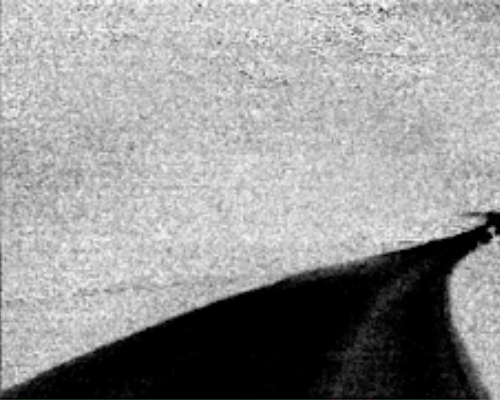
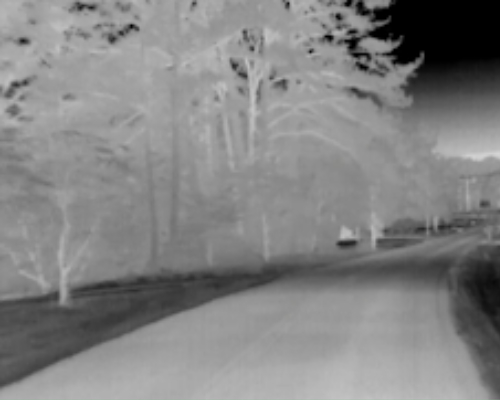
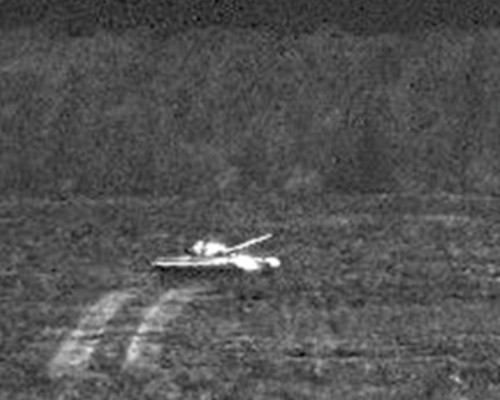
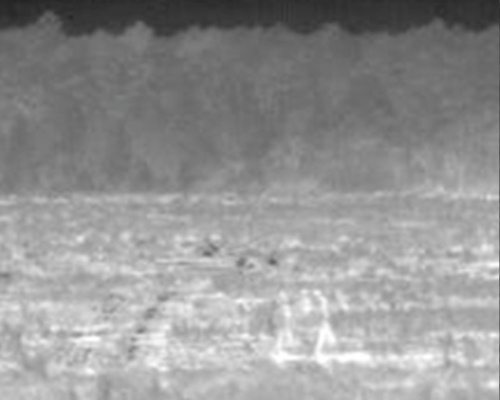


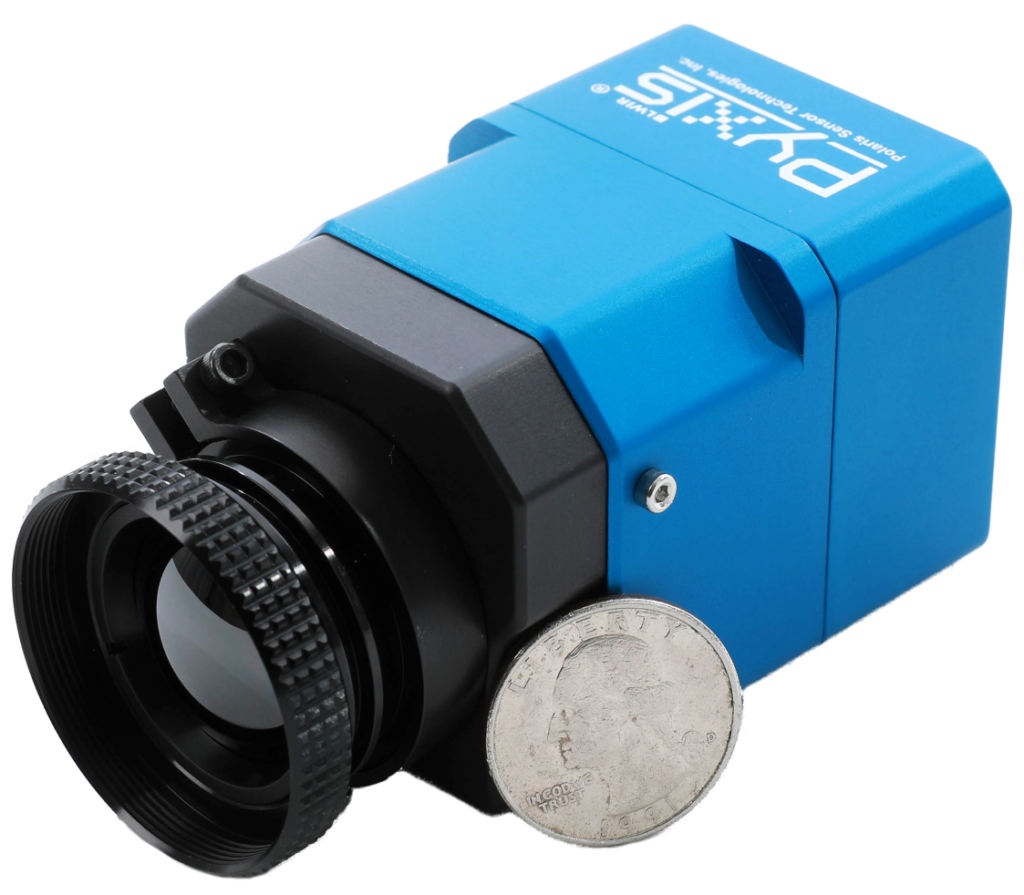
Standard thermal or visible imagery can be viewed independently, or fused images can be formed with polarimetric data. Data fusion captures all the information and displays it in a single image, giving the operator a more intuitive view of the scene. The multi-modal nature of the fused data adds dimensions for AI/ML processing.
Pyxis can be used continually, day or night, and at long distances to provide mission-critical information about your surroundings. Pyxis is not affected by thermal equilibrium when there is little difference in manmade objects and surrounding temperatures.
A polarization microgrid array integrated into the optical system captures all polarization states simultaneously and makes the system immune to motion artifacts of either the sensor or the scene.
Pyxis is battery-operated, rugged, and weighs about a quarter pound. It is small and sturdy enough to be helmet-mounted or handheld.
Pyxis can be used in various environments to increase situational awareness. It can be tailored to meet your specific mission goals.
Both analog and digital outputs are possible with sensor control available through a tablet interface. Users can view data independently or as a fused image with eTherm™.
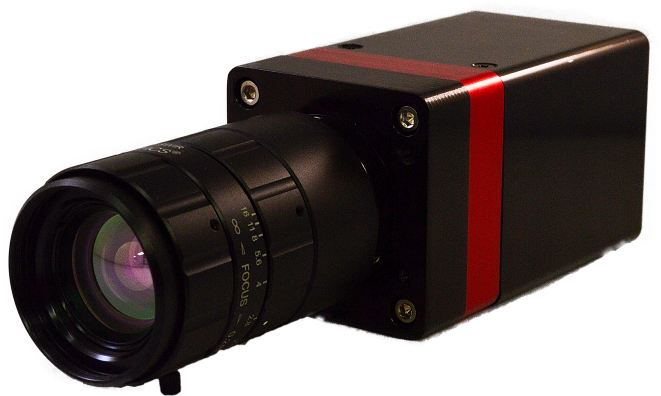
The Pyxis long-wave infrared high definition polarimeter produces real-time polarized imagery with up to 400% better detail and contrast than thermal alone.
The industry’s smallest polarimeter, Pyxis LWIR HD weighs 110 grams. It offers multiple configurations and outputs to suit a variety of applications such as oil-on-water detection, acquisition and tracking, and autonomous navigation.
| No Lens | 20mm f/0.85 | 40mm f/1 | 75mm f/1 | 15-75 mm f/1.2 | |
| Waveband | 7.5µm−13.5µm | ||||
| Resolution (H × V) | 1280 × 1024 10µm pixels | ||||
| Field of View (20 mm Standard Lens) | 36.4°×29.2° | ||||
| Camera Frame Rate | 30Hz | ||||
| Input Voltage | 5VDC or POE | ||||
| Steady State Power @ 70°F | TBD with 5VDC TBD with POE | ||||
| Operating Temperature | 0°C to 70°C | ||||
| Field of View (H x V) | N/A | 36.4°×29° | 18.2°×14.6° | 9.8°×7.8° | 46.2°×37.7° to 9.8°×7.8° |
| IFOV | N/A | 500µrad | 250µrad | 133µrad | 667µrad to 133µrad |
| Size with Lens (L × W × H) | 2.75×2.16×2.36” 70 x 55 x 60mm | 2.75 x 2.16 x 2.55” 70 x 55 x 65mm | 4.13”×2.05”×2.64” 122×52.1×67.1mm | 6.5”×3.5”×3.5” 181×88.9×88.9mm | 6.5”×3.5”×3.5” 181×88.9×88.9mm |
| Weight | 4oz 110g | 6.5oz 156g | 13oz 312g | 31oz 822g | TBD |
The Pyxis SWIR is a low-SWaP snapshot polarimeter ideally suited for applications that are substantially dynamic such as C-UAS or other threat detection, enhanced maritime sensing, discrimination, and tracking applications.
| 16mm f/1.4 | 25mm f/1.4 | 35mm f/1.4 | 50mm f/1.8 | |
| Detector | InGaAs | |||
| Waveband | 0.6µm – 1.7µm | |||
| Pixel Pitch | 15µm | |||
| Resolution (H × V) | 640 × 512 pixels | |||
| Frame Rate | up to 60Hz | |||
| Size with no lens (L × W × H) | 107.5 × 50 × 50 mm | |||
| Size with Lens (L × W × H) | 135.7 × 50 × 50 mm | 143.5 × 50 × 50 mm | 145.7 × 50 × 50 mm | 145.7 × 50 × 50 mm |
| Weight with no lens | 340g | |||
| Weight with Lens | 400 g | 411.2 g | 427 g | 425 g |
| Input Voltage | 12VDC | |||
| Steady State Power | < 8W | |||
| Data Interface | GigE | |||
| Operating Temperature | -20°C to +55°C | |||
| Field of View (H × V) | 33.4° × 27° | 21.7° × 17.5° | 15.6° × 12.5° | 11° × 8.8° |
| IFOV | 937 µrad | 600 µrad | 429 µrad | 300 µrad |
| Object Distance Range | 0.3m – INF | 0.3m – INF | 0.3m – INF | 0.3m – INF |
The Pyxis visible polarimeter uses the same pixelated polarizer architecture as Pyxis LWIR and Pyxis SWIR but works in the visible spectrum. This can be used to identify material stress, identify surface scratches, reduce glare, improve edge detection, and enhance contrast.
| 12mm f/1.4 | 16mm f/1.4 | 25mm f/1.4 | 35mm f/1.4 | 50mm f/1.8 | 75mm f/1.8 | |
| Detector | CMOS Mono | |||||
| Waveband | 400nm – 900nm | |||||
| Pixel Pitch | 3.45µm | |||||
| Resolution (H × V) | 2448 × 2048 pixels | |||||
| Frame Rate | up to 30Hz | |||||
| Size with no lens (L × W × H) | 43 × 29 × 29 mm | |||||
| Size with Lens (L × W × H) | 82.2 × 35 × 35mm | 85.4 × 35 × 35mm | 81.4 × 35 × 35mm | 82.2 × 35 × 35mm | 108.7 × 35 × 35mm | 115.2 × 36 × 36mm |
| Weight with no lens | 65g | |||||
| Weight with Lens | 165g | 173g | 151g | 149g | 178g | 211g |
| Input Voltage | 5VDC | |||||
| Steady State Power | 4W | |||||
| Data Interface | USB 3.0 | |||||
| Operating Temperature | -5°C to +45°C | |||||
| Field of View (H × V) | 38.8° × 32.8° | 29.6° × 24.98° | 19.2° × 16.1° | 13.8° × 11.5° | 9.7° × 8.1° | 6.4° × 5.4° |
| IFOV | 287µrad | 216µrad | 138µrad | 99µrad | 69µrad | 46µrad |
| Object Distance Range | 0.1m – INF | 0.2m – INF | 0.3m – INF | 0.4m – INF | 0.5m – INF | 0.6m – INF |
All Pyxis systems include Polaris’ Vega Software, which provides the ability to control the sensor, view the raw and processed sensor data, and record data for future processing. The Vega framework accepts almost any commercial camera, enabling synchronized data acquisition and storage.
A ruggedized housing is available for Pyxis at fixed sites.
Pyxis is a state-of-the-art handheld polarimetric imager. It captures live polarimetric video, providing enhanced contrast and additional information for various target detection scenarios.
Pyxis uses a pixelated polarizer filter array in conjunction with an uncooled microbolometer to capture polarimetric information.
Pyxis has been used for tasks such as enhancing detection of targets in difficult backgrounds, detecting oil on water surfaces, identifying road edges for autonomous vehicle navigation, and even facial recognition for biometric identification.
In May of 2015, Pyxis captured imagery of an oil spill off the coast of Santa Barbara, CA. The imagery included visible, thermal, degree of linear polarization, and ColorFuse images, showcasing Pyxis’s strong detection capabilities.
Pyxis’s polarization capabilities make it easier to differentiate between the real road edge and thermal shadows. This capability is crucial for autonomous vehicle navigation.
Pyxis has shown promise in non-cooperative biometric identification using uncooled sensors. Its high level of detail in polarimetric imagery allows for improvements in facial recognition without the need for external illumination.
Future work for Pyxis includes improving sensitivity to below 0.3% NeDOLP and expanding the range of available lens options. Additionally, Polaris is exploring new applications and expanding this technology into other parts of the optical spectrum. The recently released HD version of the Pyxis LWIR is the culmination of the last several years of continuous product improvement.
Yes, Pyxis has been ported to Windows-based tablets to facilitate ease of use and mobile data collection, making it a versatile tool for various applications.
Pyxis uses Polaris’ Vega Software framework, which allows for control of the sensor, viewing of raw and processed sensor data, and recording data for future processing. It also provides functionalities for sensor calibration and customization.
Pyxis stands out due to its handheld and rugged design, making it suitable for a wide range of real-world applications. It integrates LWIR, SWIR, or VIS and polarization in a single camera, providing distinct advantages in target detection and visualization.
Polaris is here to help you solve challenging problems with cutting-edge technology. We will design, develop, and manufacture the solution you need to complete your mission.